The following is a guest post, courtesy of Mike Foster.
In 2006, I travelled to Tanzania as part of a month-long expedition. During this time, I successfully summited Mount Kilimanjaro; here is a first-hand account of what every traveller should know before attempting to do the same.
“Pole-pole” (pronounced pol-eh pol-eh)
If you spend any time in Western, or really any part of Africa, you’ll hear this phrase. In Swahili, it means “slowly, slowly,” and over there, it’s not just a saying but a way of life. You might also have heard of “Africa Time”—the unfortunate consequence of the pole-pole attitude is that no one is in a hurry to do anything, so if you’re a clock watcher, you’re going to find yourself frequently disappointed. When it comes to Kilimanjaro (also referred to as Kili’), however, nothing could be more important.
Even if you don’t consider yourself particularly outdoorsy, you still have an excellent chance of completing the whole 5,895m (which is why it has become an incredibly popular tourist attraction over the past decade). But, if you don’t do it correctly, your chances of achieving this diminish to almost nothing very quickly indeed. What do I mean by “correctly”? This is where pole-pole comes in.
Take the Long Route Up
The longer you take to summit, the greater the chance you have of acclimatizing to the altitude and actually reaching the top. The altitude, not your physical endurance, is what will stop you from summiting—so, unless you plan on spending a lot of time in an oxygen deprived chamber before you go, I suggest that you don’t attempt to climb the whole mountain in a couple of days.
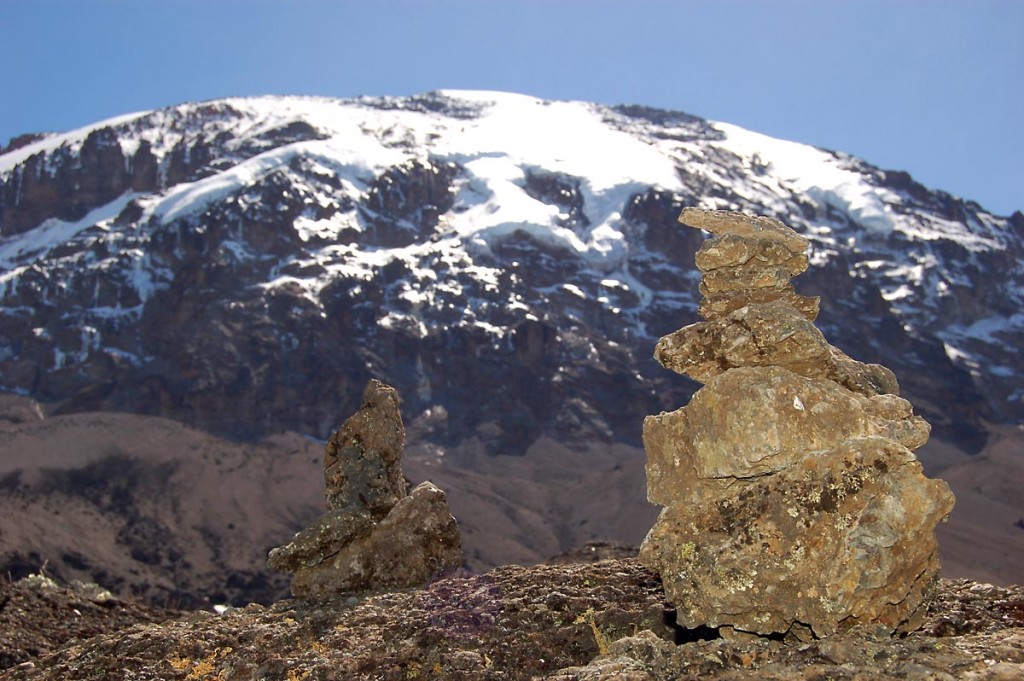
I took the Machame route, which offers a decent hike while allowing you to practice the old mountaineering mantra, “climb high, sleep low”. It takes 5 days to reach the final camp, after which you summit and descend in 2 more days. This slow ascent acclimatizes you to the altitude, so don’t be disheartened when you only gain 20m of elevation during a 4-hour hike from Barranco Camp to Karanga Camp; in fact, you’ll have actually ascended another 1,000m in that time—you’ll just come down about 980m to sleep.
Each day consists of about 4 – 5 hours hiking (with the exception of summit night), so there is no reason to push yourself to exhaustion. As you get higher and the air gets thinner, this becomes more and more critical. Bear in mind, from Day 2 you are 3,000m above sea level, and stay well above it until Day 6 (3,000m is the altitude at which most people start to get breathless from just standing upright). Given these physical difficulties, you may be wondering how you’re going to carry a week’s worth of clothes, food, and equipment along with you.
What to take?
Before I left England for Tanzania, I went on a huge shopping spree to stock up on all of the essentials for a month in the developing world, as well as anything I thought I would need for my attempt to conquer the world’s highest free-standing mountain. My priority, at the time, was to get an all-singing, all-dancing backpack in which to store all of my new toys. Whilst my 75 litre pack has served me well (and still does to this day), and it did come with me up Kili’, I was not carrying it.
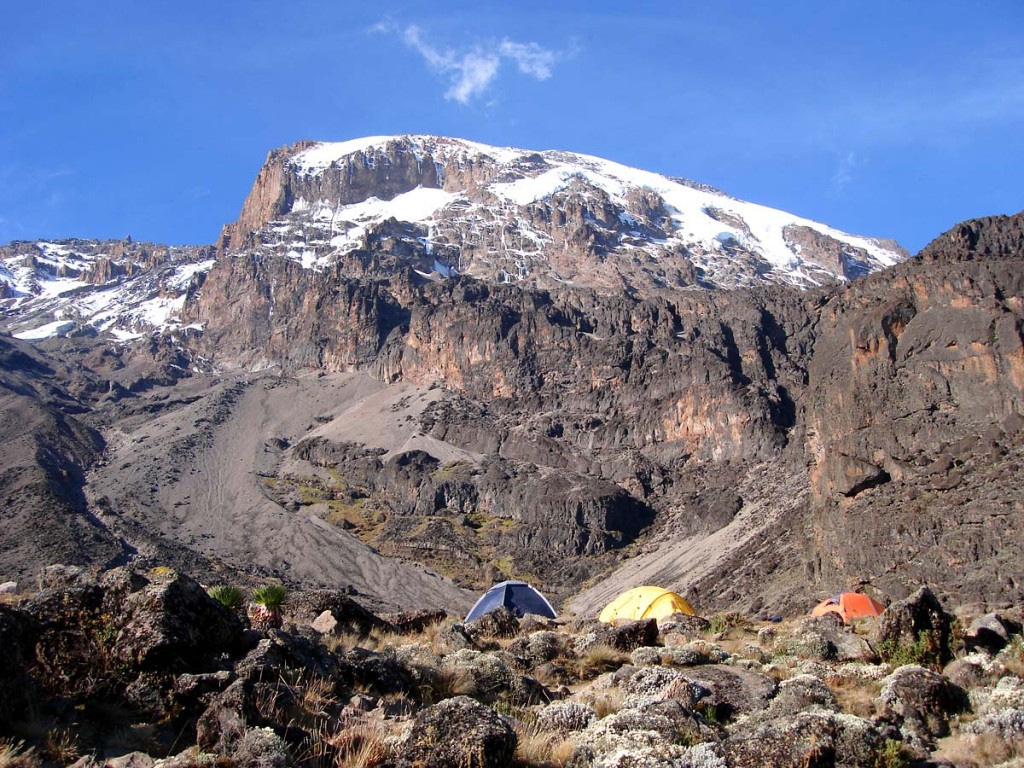
The standard practice is for a group to go with a guide who walks with you during the day, keeps pace, and offers interesting information about the mountain. Meanwhile, a group of porters carry the majority of the bags (I spotted one carrying three 75 litre packs on his own in an improvised sack slung over his head), and perform each leg of the journey at blistering speed. So, when you arrive at the next camp, not only are your things already there, but your tent is pitched, fresh water is laid at the entrance, and your dinner is on the stove. Some porters even wait until you’ve left the camp to pack up your tent, then overtake you on the hike and set it up again before you arrive at the next one. There are some items, however, which are absolutely crucial to have with you at all times:
1. Day sack; During the hike, you’ll need a small, comfortable bag to carry your lunch, any personal belongings you may want (like your camera and valuables; try to be minimalist with what you carry) and most importantly: water.
2. Water bottle; Staying hydrated is absolutely imperative at altitude. You are going to dehydrate a lot quicker because of the low humidity of the air you’ll be breathing. Carrying 1.5 litres of water with you to last the day’s hike would not be at all excessive. From personal experience, I would also suggest getting some sort of insulation to cover your water bottle, as both of mine froze solid on summit night, when I needed them most.
3. Down jacket, or variation of; A down jacket has the advantage of being extremely warm whilst lightweight. It also packs up smaller than a regular jacket, which makes it ideal for trekking (but a good one will set you back a few pennies). Bear in mind that the mountain is in Africa, so when you set off you’re going to be hot. The temperature drops drastically above 4,000m, however, and the trademark white cap of Kili’ is a glacier. I can attest to the coldness at the summit, having stupidly taken off my gloves while fumbling with my water bottle, which resulted in getting frost-nip (first-degree frost bite) in 7 of my fingers.
4. Layers of clothes; I highly recommend that you pack an undershirt, light shirt, light fleece, heavy fleece, and thick jacket. That way, you can build up and strip down as you need to throughout the day. You may also want to consider indulging in a few luxuries; you’ll have a reasonable amount of time to spare following your hikes and before dinner, so it’s nice to have a book or some playing cards to keep you entertained (anything that doesn’t run on electricity is preferable).
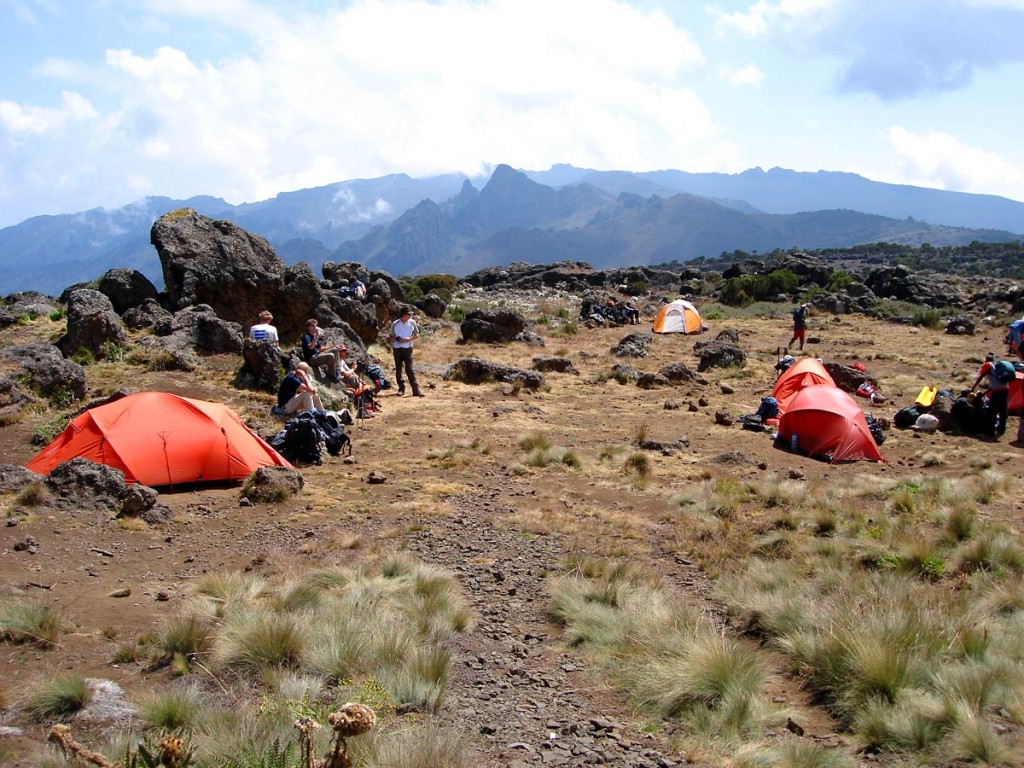
Summit Night
If you’ve made it this far, you’ll be relieved to know that soon you’ll be able to wash yourself with running water again, and use a lavatory that isn’t known as a “long-drop”—for those of you that don’t know what that means, I’m sure you can make an educated guess.
If you take the same route I did, along the Machame route, you’ll end up at Barafu, the final point with enough flat ground to establish a camp. Over 1,100m lower than the peak, there is a considerable chunk of the mountain left to climb, which you’ll want to do before the sun comes up (not least because the sunrise is absolutely stunning from your elevated vantage point).
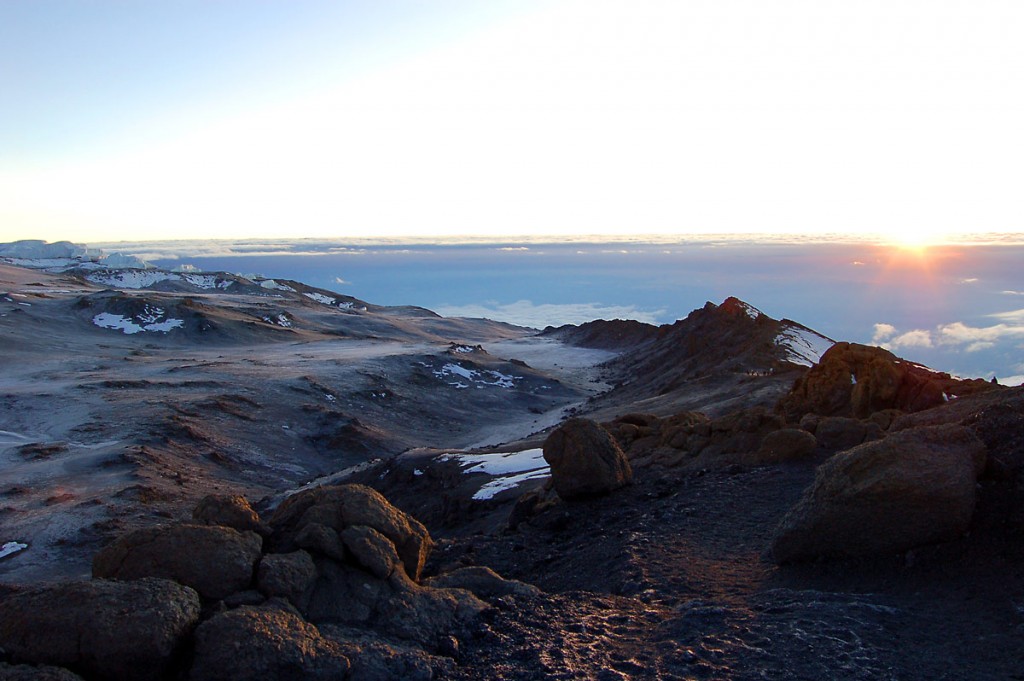
As for my own experience of finally summiting Kili’, I was awoken at midnight, and our group assembled to begin the 7 hour final leg to Uhuru Peak. At this point, the slopes are relatively steep—for myself, they felt impossibly so as Acute Mountain Sickness (AMS) began to settle in. AMS affects everyone differently, and some people not at all. As we pushed on further, two members of my group were physically ill—one was actually sent back to camp after it was determined that he shouldn’t continue. In the meantime, my own AMS continued to intensify—my body felt like it was made of lead, and my lungs felt useless as they sucked away at the freezing air in a fruitless attempt to find oxygen.
At one point, I genuinely considered turning back. Luckily, I thought to ask our guide, who had an altimeter, how much further we had to go; he notified me that there was only 100m of elevation to the summit. It was at this point I had to dig deep, but there was no way I’d climbed for 6 days just to turn around within touching distance of the summit. So, after another hour and a half that involved a lot of stopping, a couple moments on the verge of losing consciousness, and a significant amount of propping up from our guide, I made it to Uhuru peak. It is genuinely one of the most stunning views I have ever experienced, and it pains me to reminisce about it now, because all I could think about at the time was getting down. Which you do rapidly; I really did lose consciousness at one point, so it was probably for the best.
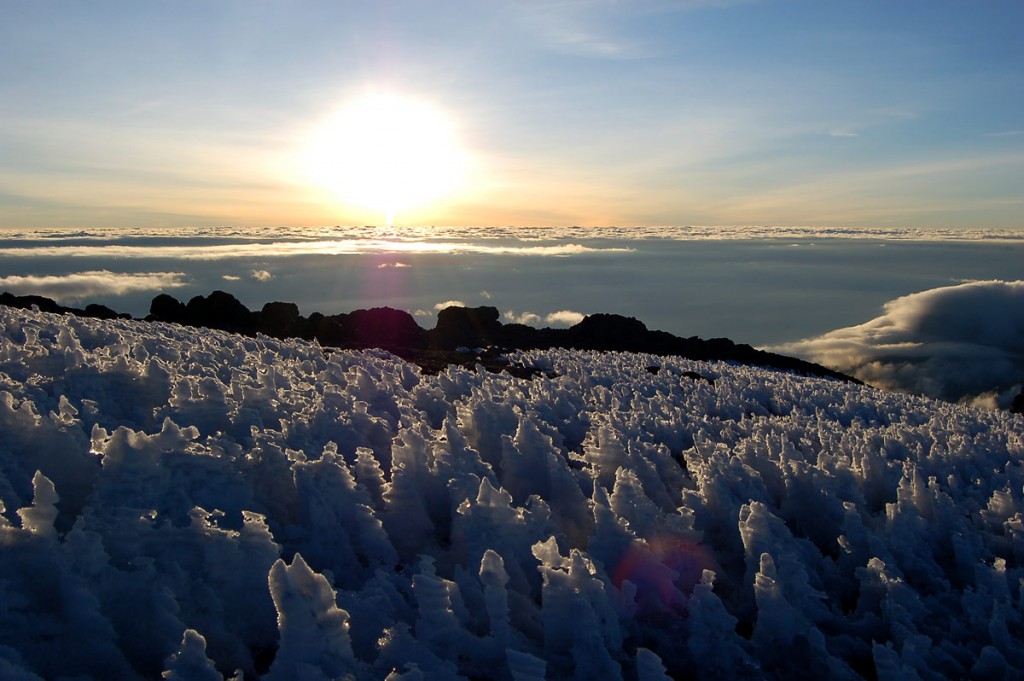
For anyone who is put off by my recollection, I do not mean to deter you. In fact, my friend who suffers from asthma was extremely worried about the altitude, but completed the entire climb without any problems. Climbing Mount Kilimanjaro is difficult but achievable, and an indescribable reward awaits you at the top.